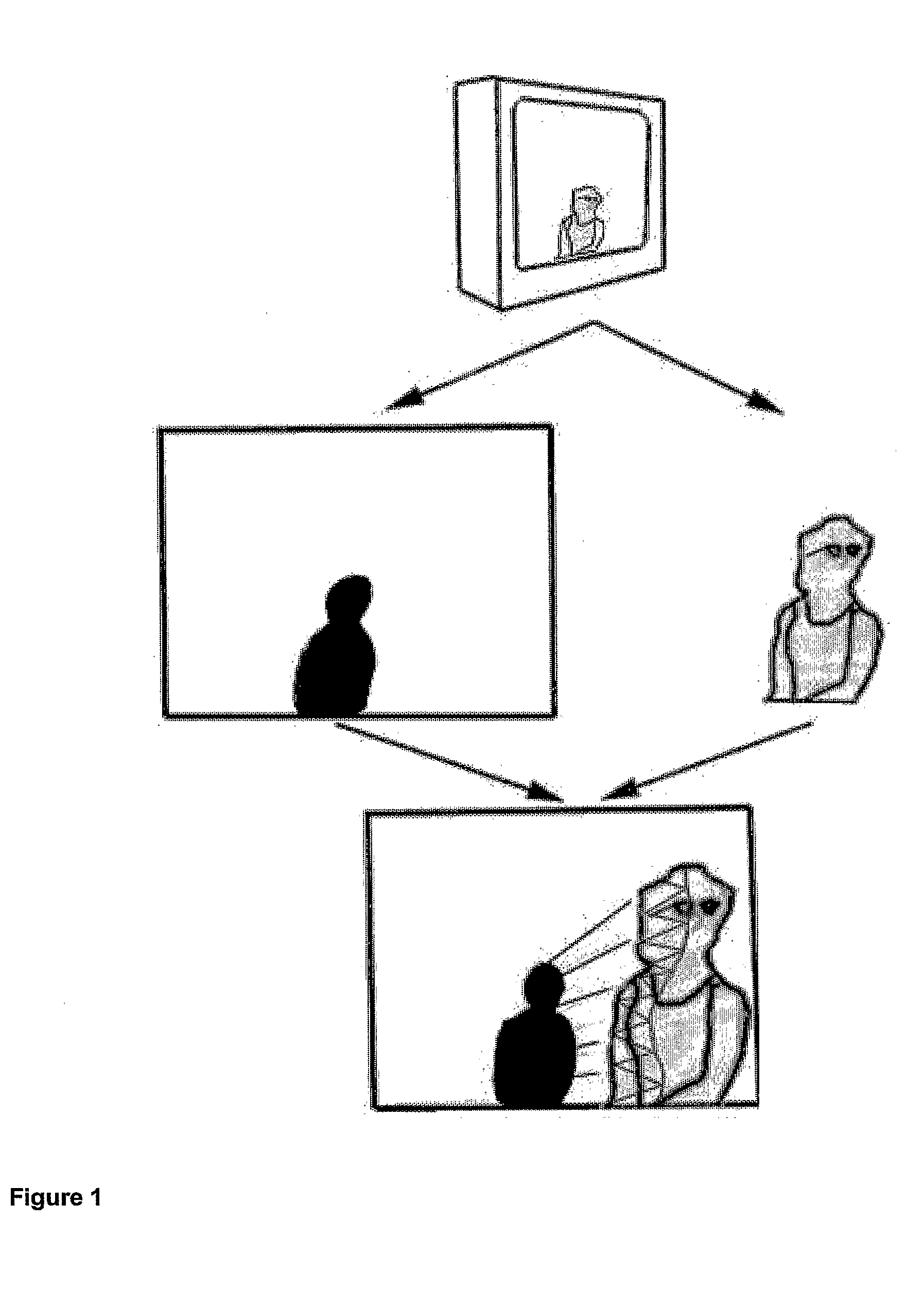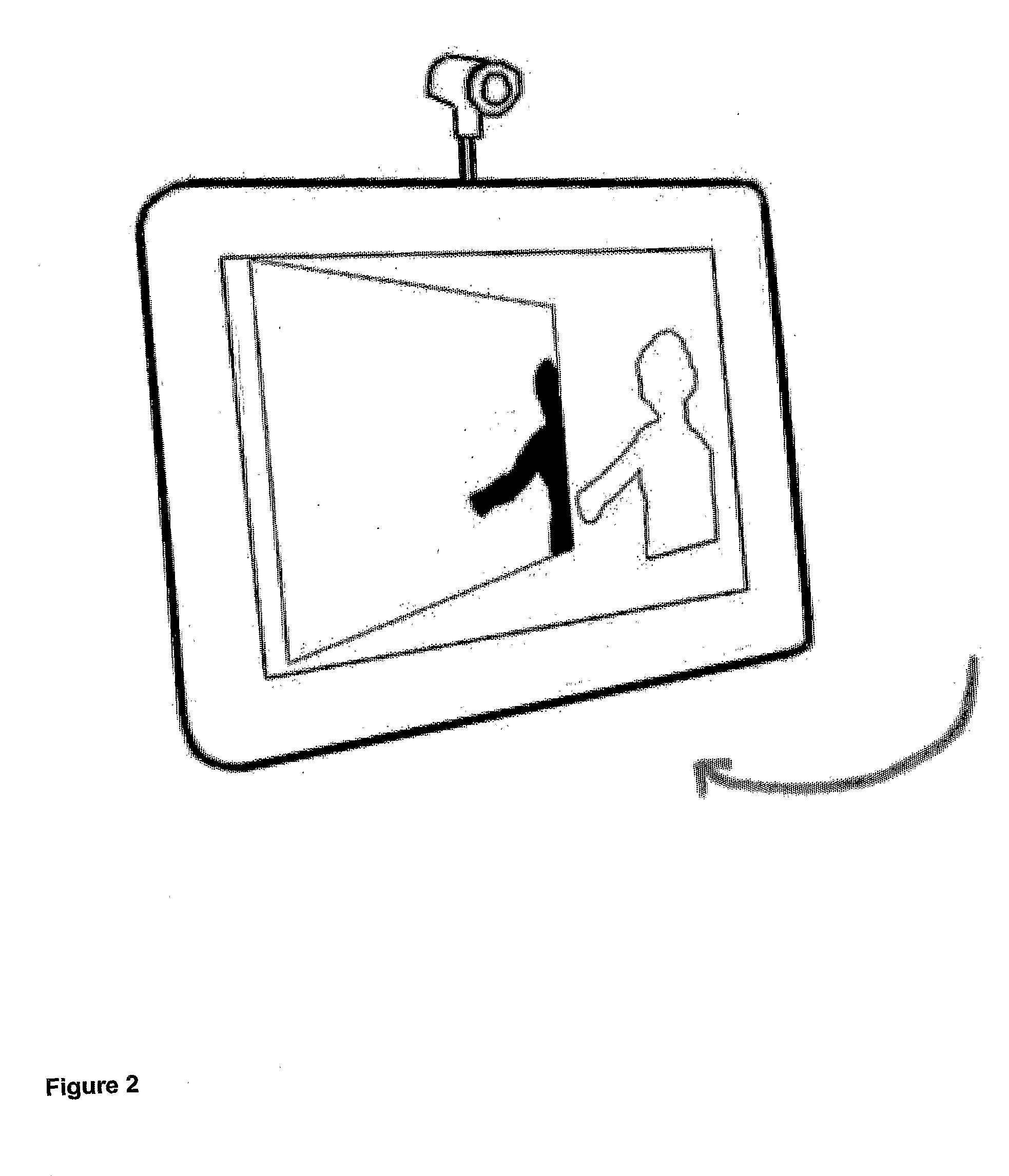Automatic Scene Modeling for the 3D Camera and 3D Video
a technology of automatic scene modeling and 3d camera, applied in the field of image processing technology, can solve the problems of no ability to move around in the 3d, no depth perception, no ability to incorporate foreground objects, etc., and achieve the effect of reducing video bandwidth and high frame-ra
- Summary
- Abstract
- Description
- Claims
- Application Information
AI Technical Summary
Benefits of technology
Problems solved by technology
Method used
Image
Examples
Embodiment Construction
[0043]A better viewing experience would occur with photos and video if depth geometry was analyzed in the image processing along with the traditional features of paintings and images, such as color and contrast. Rather than expressing points of color on a two-dimensional image as in a photo, a painting or even in cave drawings, the technology disclosed here processes 3D scene structure. It does so from ordinary digital imaging devices, whether still or video cameras. The processing could occur in the camera, but ordinarily will happen with the navigation at the viewer. This processing occurs automatically, without manual intervention. It even works with historic movie footage.
[0044]Typically in video there will be scene changes and camera moves that will affect the 3D structure. Overall optical flow can be used as an indicator of certain types of camera movement; for example, swiveling of the camera around the lens' nodal point would remove parallax and cause flattening of the 3D mo...
PUM
 Login to View More
Login to View More Abstract
Description
Claims
Application Information
 Login to View More
Login to View More - R&D
- Intellectual Property
- Life Sciences
- Materials
- Tech Scout
- Unparalleled Data Quality
- Higher Quality Content
- 60% Fewer Hallucinations
Browse by: Latest US Patents, China's latest patents, Technical Efficacy Thesaurus, Application Domain, Technology Topic, Popular Technical Reports.
© 2025 PatSnap. All rights reserved.Legal|Privacy policy|Modern Slavery Act Transparency Statement|Sitemap|About US| Contact US: help@patsnap.com



